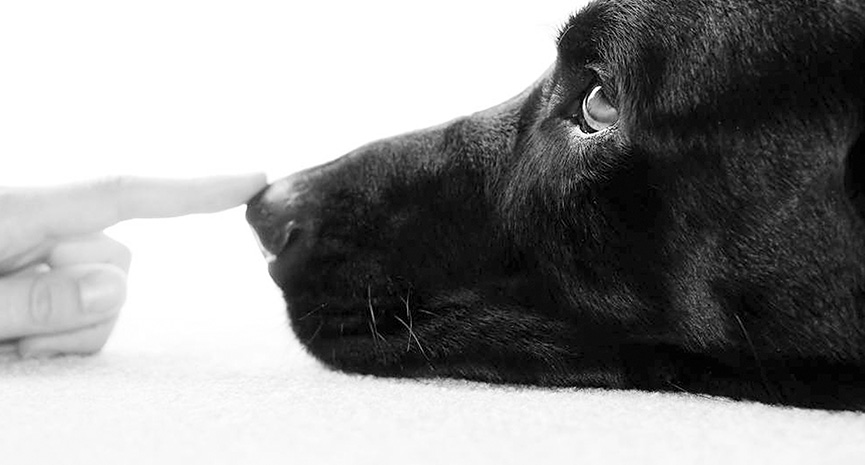It’s important for your canine companion to remember who is in control…
You took one look at those big eyes, funny ears and wagging tail, and it was love at first sight. Dogs are a constant source of companionship and fun, but bringing one into your home is a life-long responsibility. If they aren’t trained correctly, they can wreak havoc on your life and house. Dogs need to be trained so they know their limits and what is expected of them.
And training starts with the owners choice in a dog. It is vital to choose the right dog for your lifestyle or family. Consider your home’s chaos level right now, particularly if you have children under the age of say five. If you don’t have time to learn about and train your dog, it may make sense to wait a few years until your family is ready to care for a pet. Conversely if you travel or are away from home long hours take that into consideration.
There are a myriad number of dog training ideologies, techniques and aids out there. While different methods or combinations of methods will prove effective for different families, below are some DIY training tips that will help your dog become a good canine citizen and family member. And it just can’t be said enough, consistency will win the day and the dog’s training is everyones’ reward.
Here are some fundamentals to get you started.
Sit – This crucial command helps your dog learn impulse control. The simplest way to teach sit is to hold a treat like a magnet to the dog’s nose, then guide it up. Typically, in an attempt to continue following the treat, the dog will put his rear end on the floor. As soon as he does, praise him and give him the treat.
After a few trials, begin to say sit immediately, before guiding the dog into position. From there, it is very important to quickly remove the food lure from your hand. If you do not, your dog will only sit if you show him you have a treat for him. This command is key to start teaching your dog to not inappropriately jump up on people he encounters.
Come – Teaching the command come will enable you to keep your dog safe, particularly if outdoor off-leash time will be part of your lifestyle. When working on this command, make sure the result of the behavior is more rewarding than anything else in the environment. If you call your dog to you, but then immediately put his leash on and leave the park, your dog will quickly realize that come is a word to avoid if he wants more play time.
To teach this command, stand next to your dog, say come and then jog away, encouraging your dog to chase you. When he comes back to you, give him a reward, such as a combination of food and praise.
Sit Down – An important command for dogs that beg for food at the dinner table, sit down is utilized to send your four-legged friend to a designated place in the home during meal times, or when company comes to call, until he is released from that spot. Start out by taking your dog to the spot you have decided upon, such as his bed, a corner or crate. Consistently use the same command. When your dog lies down, give him positive reinforcements, like a treat and/or praise for the behavior. Then, wait 10-15 seconds and release your dog from the spot.
Continually repeat this exercise, building up the time your dog remains in the lie down position. Slowly increase the amount of time your dog spends in this position before you reward him, and increase the physical distance between you and your dog when the lie down command is given.
Give repeated positive reinforcements to your dog for obeying. If needed, physically bring your dog back to his special spot until he understands what you want, and never forget to praise and reward him for this behavior.
Be patient the goal is success whether it takes a day, a week, or a month.
Don’t Pull – Taking your dog for walks is important for both yours and his mental and physical health. But nothing is more uncomfortable than having your dog yank you off your feet and race half-way down the block. It’s important for your canine companion to remember who is in control, especially when squirrels or smelly garbage beckons.
The first thing to remember is that dogs often pull on their leashes because they are full of excess energy. Therefore, the first rule is to make sure your dog is getting enough exercise.
When training your dog not to pull on his leash, walk at a brisk pace. If your dog pulls, immediately stop walking and give a tight pull back on the leash not a choke a tug will do. Call your dog back to your side and give the sit command. Reward the sit behavior with a treat and/or praise and then resume walking. Repeat as needed.
Down – Mastery of the down command enables your dog to show you a high level of respect and embellishs your Alpha standing. But it also helps keep your dog safe from harm. To teach your dog down, first command him to sit. With a treat lower your hand towards the ground slowly. Your dog will follow the treat with his nose until your hand is at ground level.
At this point, your dog will either be completely down on the ground or hunched over in a semi-down position. Slowly pull the much-coveted treat away from your dog, forcing him to follow your fingers and slump further toward the ground. When your dog is completely in the down position, give the treat to him and praise him effusively.
Eventually, the word down, and your hand movement, will be enough of an incentive for your dog to obey this command.
A gentle, firm hand will not only keep your dog happy, but also go a long way toward keeping both him and the people he comes into contact with safe.
As with every family member, your furry friend has responsibilities. As your dog’s owner, your job is to give him the tools he needs to live a happy, healthy and long life.





